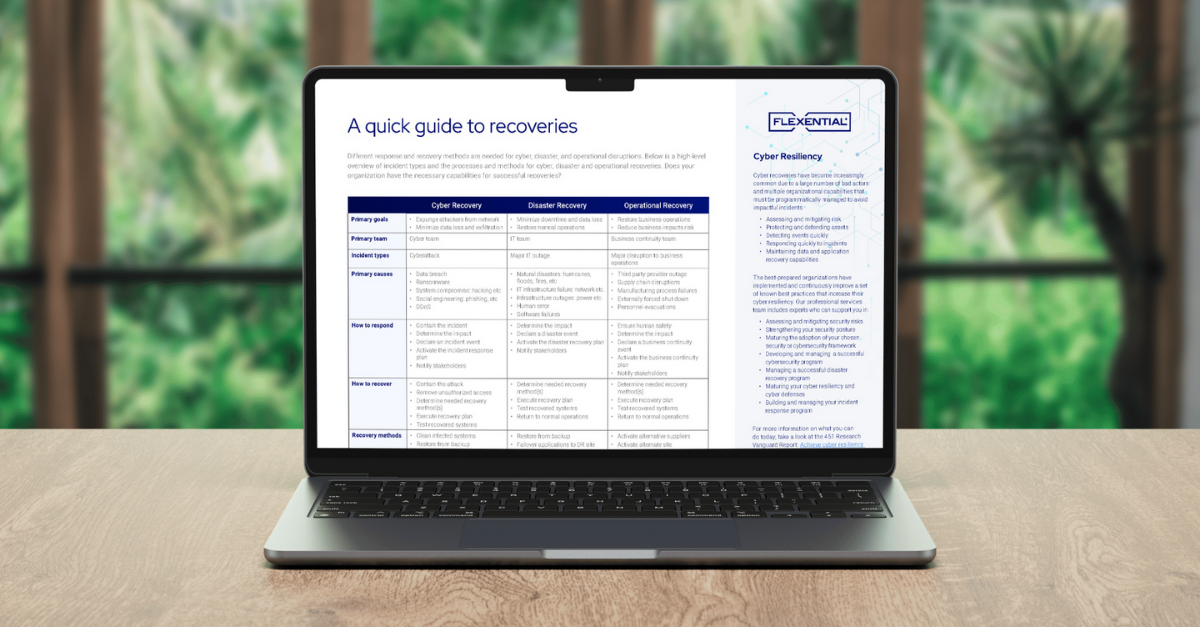Achieve data security and regulatory compliance without breaking the bank
Manage risk without breaking the bank with a trusted partner who can help you navigate your data protection and compliance needs. Learn how!

A quick scan of the headlines makes it easy to see why data protection and regulatory compliance are ongoing concerns for many companies. Last year, the average cost of a data breach reached a record high of $4.45 million, according to IBM and the Ponemon Institute. This, combined with the resulting reputational damage, is enough to cripple many organizations—or put them out of business.
At the same time, securing data and maintaining regulatory compliance has become increasingly complex, with organizations facing hundreds of security and privacy-related standards, regulations, and laws. While data breaches and network hacks are at an all-time high, regulations are becoming more specific and increasingly strict. To make matters worse, many C-level executives and IT administrators lack the expertise to navigate the maze of government and industry regulations.
How can you best tackle your compliance needs without breaking the bank—or overloading your IT department?
Understand your assets
To meet the security and privacy requirements of most regulations, it's important first to determine which assets you need to protect and then determine who, both inside and outside of your organization, touches those assets. For example, before you can comply with HIPAA regulations for handling protected health information, you need to identify the types of information you capture, handle, or own and, just as important, where that data resides. Then, you can start thinking about how to isolate and segment that data to protect it.
It is helpful to create an application roadmap to see exactly how that data flows and which applications, both internal and third-party, touch-sensitive data. In the same way, if you are processing cardholder data, you need to ensure that you are meeting the requirements of PCI DSS. Once you inventory your IT assets for payment card processing, you can analyze them for vulnerabilities that could expose cardholder data.
For more insight, download The IT leader’s ultimate guide to building a disaster recovery strategy. This step-by-step guide helps IT leaders identify their organizations’ unique business needs and then develop the right disaster recovery plan to match those needs.
Find the gaps
Remember when you were young, and your parents took you to the doctor for a shot? Getting that shot was less painful if you didn't look, right? In the past, companies often took this approach with gaps in data security. It's the old adage: What you don't know won't hurt you.
This is no longer an option. Today, companies of all sizes are investing in third-party audits to gain a clear understanding of their IT environment's vulnerabilities. Auditors can help you see where breaches can occur. Once the audit is complete, talk to your team about its outcomes and create a strategy to fill the gaps.
Choose the right partner
Turning to a reliable IT infrastructure partner for cloud and/or data center services—with the processes, technology, and expertise to address regulatory requirements—can help minimize the complexities of compliance. For many organizations, working with a partner is the most cost-effective option. This partner can alleviate some of the burden on your IT department, freeing them to devote their resources to more strategic endeavors. It can also cut down on configuration and deployment errors, mitigate risk, and deliver a near-immediate return on investment. Our guide to selecting the right colocation provider will help you identify exactly what you can expect that partner to do for you.
The compliance landscape isn't getting any easier to navigate or any less expensive. With the right partner, you can survive in this environment without breaking the bank—or going it alone. Contact us to learn how!






